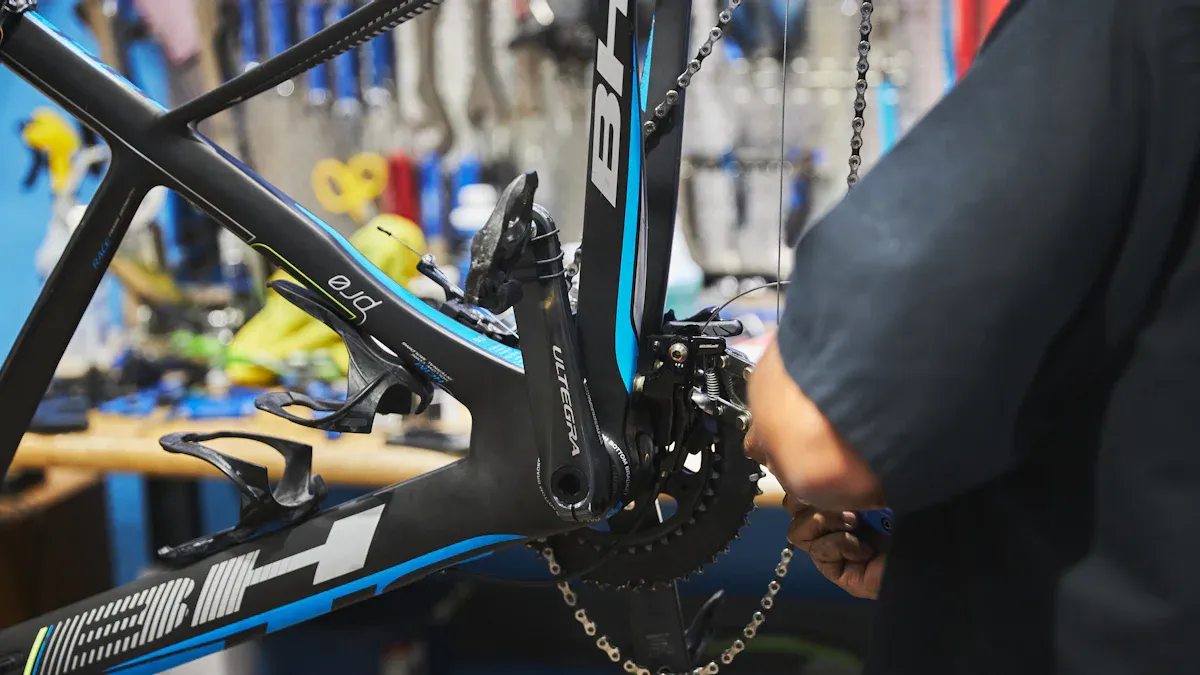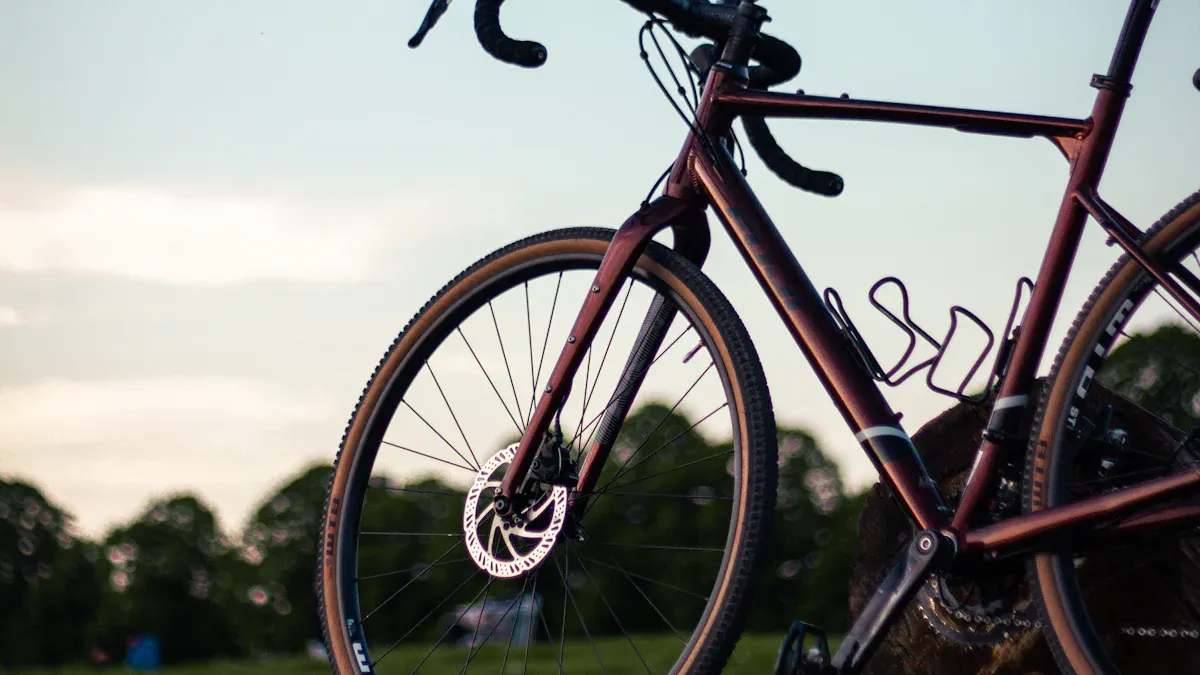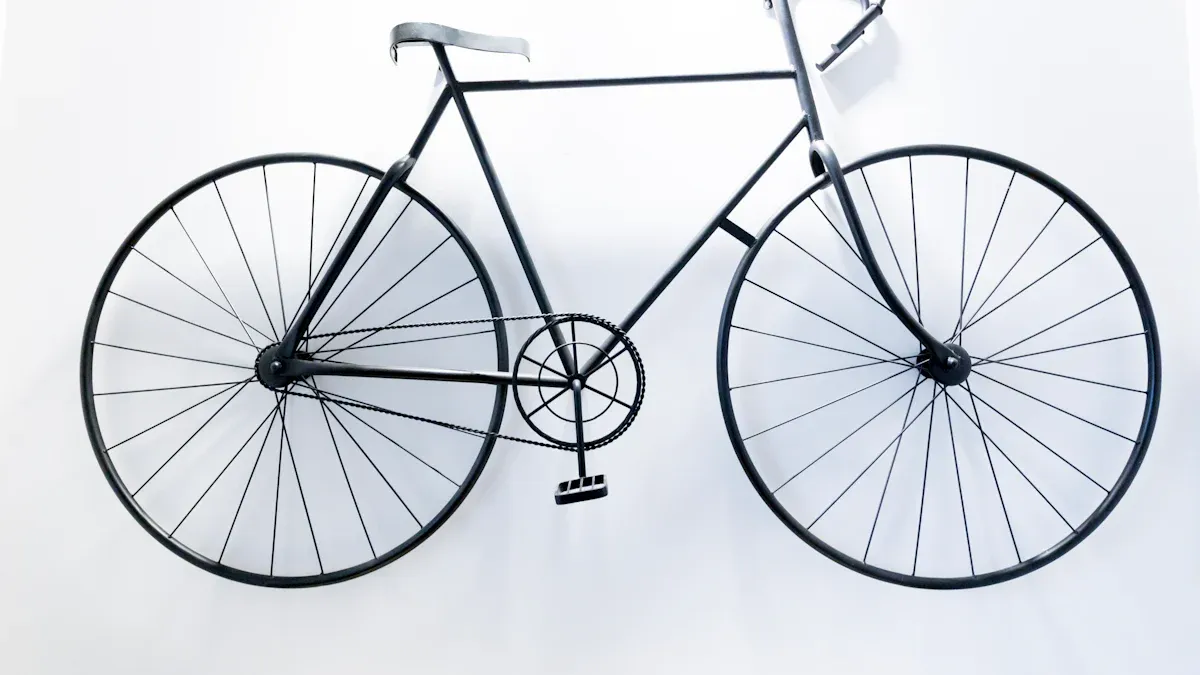
Stack in bike frames refers to the height from the bottom bracket to the top of the head tube. This measurement is crucial for achieving a good bike fit. Understanding stack bike frame dimensions helps you find a comfortable riding position, which can enhance your overall performance. A bike frame that fits well allows you to ride longer and more efficiently. By considering the stack bike frame, you can ensure your bike aligns with your riding style and needs.
Key Takeaways
Stack measures the height from the bottom bracket to the top of the head tube. This measurement is important for a comfortable bike fit. A higher stack lets you sit more upright. This can make long rides more comfortable. Understanding stack and reach together helps you find the right bike shape. This is important for your riding style, whether you want comfort or speed. Measuring stack correctly is very important. Use tools like a tape measure and level for accurate results. Picking the right stack can lower injury risks. It can also improve your overall cycling performance.
Understanding Stack in Bike Frames

What is Effective Stack?
Effective stack is an important measurement in bike design. It shows the height from the bottom bracket to where you hold the handlebars. This measurement helps decide your riding position and comfort on the bike.
Stack measures the vertical distance from the bottom bracket’s center to the top of the head tube. The stack number tells you how upright a bike’s cockpit is. A higher stack number lets you sit more upright. A lower stack number gives you a more aggressive fit.
Knowing effective stack helps you pick a bike frame that fits your riding style. For example, endurance road bikes usually have a bigger stack than racing bikes. This design helps you sit comfortably and upright, which is great for long rides.
Here are some key points about effective stack:
Effective stack affects how far you reach to the handlebars.
A higher effective stack can make your riding position more relaxed.
A lower effective stack may encourage a more aggressive riding style, good for racing.
Many cyclists say they feel more comfortable after changing their bike’s stack height. For instance, one user liked the shorter reach from a smaller stem and higher bars. This shows that changing stack height can improve comfort. Another user said their favorite bike, the Tallboy, has a higher stack height, suggesting that some bike designs can make riding more comfortable.
Stack and Reach: Key Bike Geometry Concepts
The Relationship Between Stack and Reach
In bike geometry, reach is the distance from the bottom bracket to the head tube. This measurement is important for your riding position. Here are some key points about reach:
Reach shows how far you reach to the handlebars.
A longer reach makes you stretch out more. This can help reduce wind resistance.
A shorter reach helps you sit more upright. This can make long rides more comfortable.
The way stack and reach work together affects your riding experience. Finding the right balance of these two measurements is important for a good riding position. Here’s how they connect:
Stack is the height from the bottom bracket to the headset. Reach is the distance to the same point but sideways.
Together, stack and reach change how long and tall a bike feels. This impacts your comfort and control.
When you change stack and reach, you also change how your bike handles. For example, a higher stack with a shorter reach can make you sit more relaxed. This setup is often liked by endurance cyclists who want comfort over speed. On the other hand, a lower stack with a longer reach can make you lean forward more, which is better for racing.
Think about how stack and reach affect your riding style:
A higher stack helps you sit more upright. This can reduce strain on your back and neck.
A longer reach can improve aerodynamics. This makes it easier to go fast, especially in races.
These factors also affect how stable and easy to steer your bike is. This is important for sharp turns and going downhill.
Knowing how stack and reach work together helps you choose the right bike geometry. Whether you want comfort for long rides or a racing position, understanding these measurements helps you find the best bike frame for you.
Measuring Stack: A Practical Guide

To measure stack correctly, you need some important tools. Get these items ready before you start:
A tape measure or a ruler for exact measurements.
A level to keep your bike steady while measuring.
A notepad or smartphone to write down your results.
After you have your tools, follow these steps to measure stack well:
Description | |
|---|---|
Effective Top Tube (ETT) | Measure straight from the center of the seat tube to the center-top of the head tube. |
Head Tube Length (HT) | Measure the head tube length from where it connects to the top and bottom of the headset. |
Stack | Measure the vertical distance from the center of the bottom bracket to the center-top of the head tube. |
Reach | Measure the horizontal distance from the center of the bottom bracket to the center-top of the head tube. |
When measuring stack, take your time. Being accurate is important. A small mistake can cause discomfort or bad bike handling.
You can use different ways to measure based on what you need. For example, manual measuring is okay but can take longer. Digital measuring is very accurate and quick, which many cyclists prefer. If you want the best results, think about using advanced tools like LogStackLIDAR or photo-optical methods. These give you the best accuracy and consistency.
By learning how to measure stack, you can make smart choices about your bike’s design. This knowledge helps you find the right stack bike frame that fits your riding style and position.
Choosing the Right Stack for Your Road Bike Geometry
Picking the right stack for your road bike is very important. It helps with comfort and how well you ride. Different riding styles need different stack sizes. Here are some tips based on how you like to cycle:
Stack Recommendations for Different Riding Styles
Bike Model | Reach (mm) | |
|---|---|---|
Specialized Roubaix | 605 | 395 |
Cannondale Synapse | 3 cm higher than Caad 9 | N/A |
Trek Domane | N/A | N/A |
Litespeed Arenberg | N/A | N/A |
Racing Bikes: These bikes usually have a lower stack and longer reach. This helps you get into a position that cuts through the wind, which is important for going fast.
Recreational Bikes: These bikes have a higher stack and shorter reach. This setup focuses on comfort and stability, making it easier to enjoy longer rides.
Common Mistakes to Avoid When Selecting Stack
When picking the right stack, watch out for these common mistakes:
Ignoring Handlebar and Stem Geometry: Make sure the handlebar and stem match your stack and reach numbers. This is key for a comfy riding position.
Overlooking Hood Length Variations: Different brake systems have different hood lengths. This can change how well you fit, causing discomfort or making it hard to ride.
Neglecting Lever Geometry Differences: Many riders forget to think about the differences between electronic and mechanical shifting systems. These can change how far you feel you have to reach.
Choosing the right stack bike frame can really improve your riding. By knowing your riding style and avoiding common mistakes, you can find a bike that fits you well. Remember, the right stack and reach will help you stay comfortable while riding, so you can enjoy your time on the bike.
Knowing about stack in bike frames is important for a comfy and efficient ride. Here are the main points:
Stack measures how high it is from the bottom bracket to the top of the head tube.
A taller stack helps you sit more upright, making long rides more comfortable.
The right stack height can lower injury risks, which helps your cycling performance over time.
When choosing a bike, think about your riding style and how you like to fit. Check your saddle and handlebar positions to find the best stack for you. By paying attention to stack and reach measurements, you can get a good fit and have a healthier cycling experience. 🚴♂️
FAQ
What is the difference between stack and reach?
Stack measures how high it is from the bottom bracket to the top of the head tube. Reach measures how far it is sideways from the bottom bracket to the same point. Together, they help define how you sit and feel on the bike.
How does stack affect my riding position?
A higher stack lets you sit more upright. This can make long rides more comfortable. A lower stack makes you lean forward more, which is better for racing. Your choice depends on how you like to ride.
Can I adjust stack height on my bike?
Yes, you can change stack height by swapping parts like the stem or handlebars. This helps you get a better fit. Always make sure that any changes keep your bike safe and easy to handle.
Why is effective reach important?
Effective reach affects how far you reach to the handlebars. A good reach helps you stay comfortable while riding. It also impacts how well you cut through the wind and control the bike, especially on long rides or in races.
How do I know if my stack is right for me?
To see if your stack is good, check how you feel during rides. If you feel pain or strain, think about changing your stack height. Talking to a professional bike fitter can also help you find the best fit.
See Also
Essential Gas Bike Frame Insights For Every Builder
Key Features Of Step-Through Frame Bikes Explained
Transformative MTB Frame Design Changes For Better Riding
